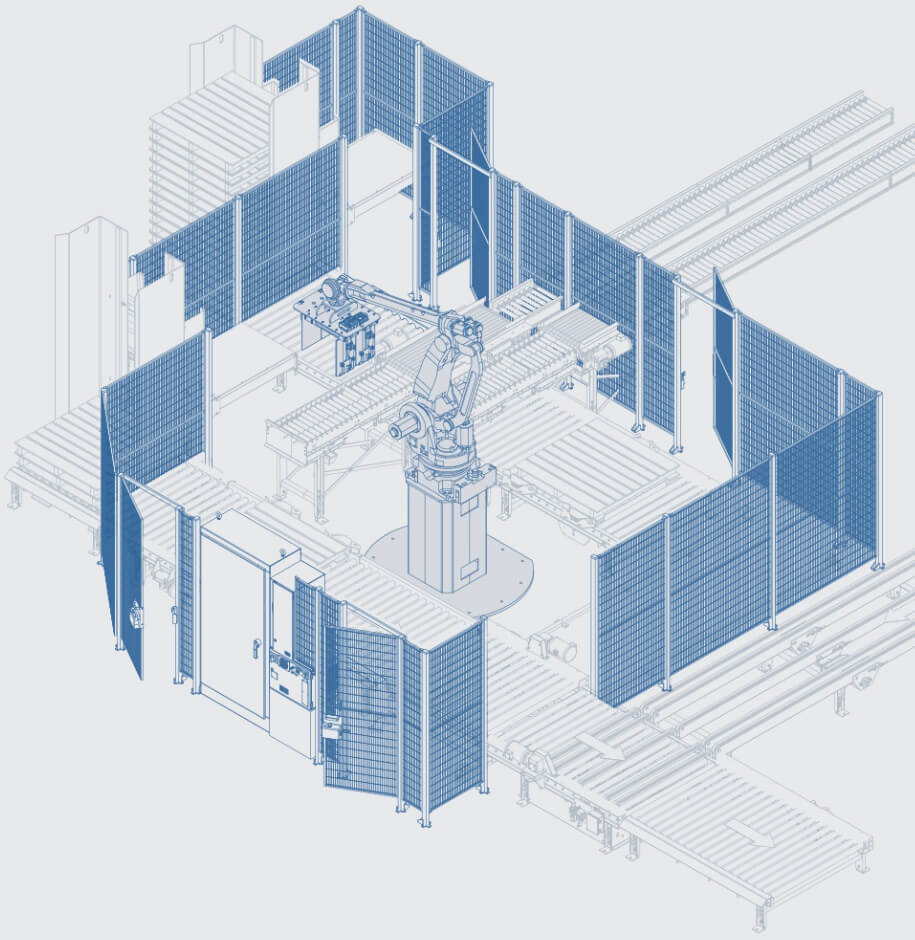Robotic Palletizer Cost
7 Key Factors in Determining the Cost of a Robotic Palletizer
What does a robotic palletizer cost? While the cost of a palletizing robot arm may be easy to determine, calculating the cost for a complete robotic palletizing cell can get more complex. There are several variables that can affect the cost of a robotic palletizer, and our team has selected 7 crucial factors. With that said, if you just need to palletize standard cartons, there is a good chance that you may be able to use one of Quick-Ship Palletizers that start at $100,000 and feature industry leading FANUC robotic arms.
Quick Ship Palletizers
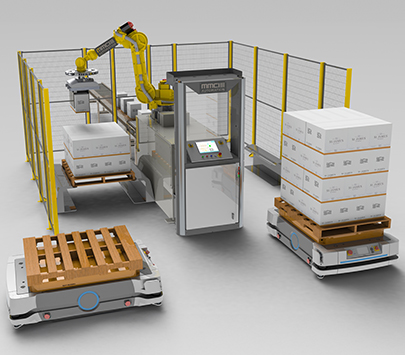
"Quick-Ship" Robotic
Palletizers
Cost-effective, pre-engineered robotic palletizers that ship quickly, install easily and run efficiently.
Purchase prices start at $175,000 or choose our SmartLease program.
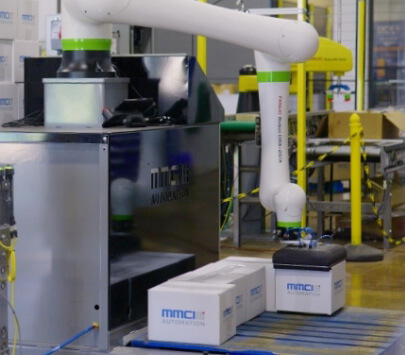
"Quick-Ship" Cobot
Palletizers
Safe, easy-to-integrate collaborative robots that are revolutionizing the industry.
In stock with prices starting at $100,000 or choose our SmartLease program.
1. Robotic Arm Costs
As one would expect, the cost of the robotic palletizing arm is one of the main factors in any cell design and typically is specified based on the following factors.
Reach
This is the distance from the center of the robot to the furthest extension of the arm. In general, longer reaches typically require more expensive robotic arms.
Payload
This is the weight of the object being handled and the end-of-arm-tooling. In general, the heavier the loads, the more expensive the robotic arm.
Speed
While challenging to classify, how fast one needs the robot to operate can affect the arm selection and cost as well.
Axes
For most standard palletizing applications 4-axis robotic arms can be used. However, if the process requires rotating, tilting or some other function, it may require a more expensive 5- or 6-axis robot.
Special Attributes
Will a standard robotic arm work or is the operation potentially in a freezer environment, requiring a heated jacket to be placed around the arm.
Supplier
We've worked with many robotic arm suppliers and chose to become an Authorized Systems Integrator for FANUC as they have the industry's best and most robust line of palletizing robots.
2. Special Attributes
Another question to evaluate is whether your environment features extreme temperatures or exposure to chemical or other hazardous conditions that would require protective jackets.
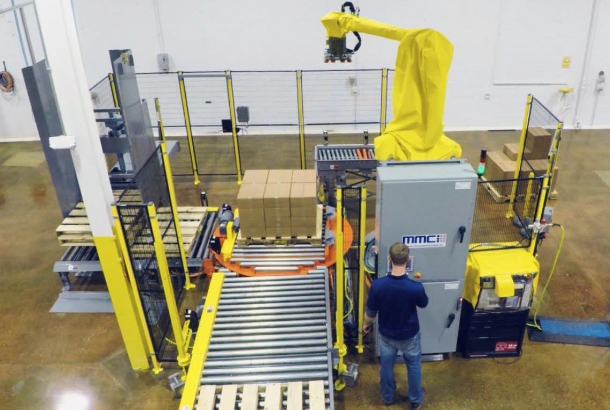
A Case in PointFrozen Food
In extreme cold environments, like frozen food manufacturing spaces, robots might be wrapped in protective jackets to prevent air lines from freezing.
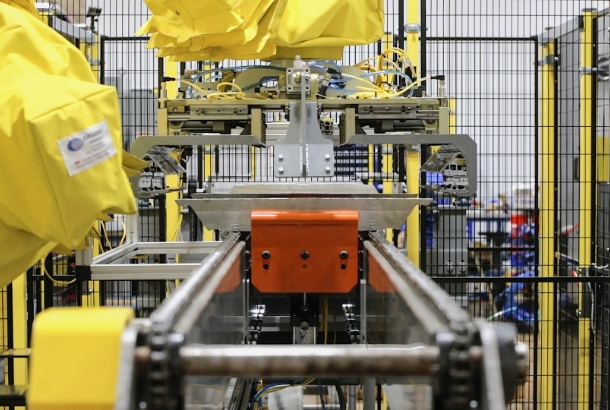
A Case in PointIntense Heat
Hot environments might not only require the robotic arms to be suited with cooling mechanisms, but also electrical and other critical systems.
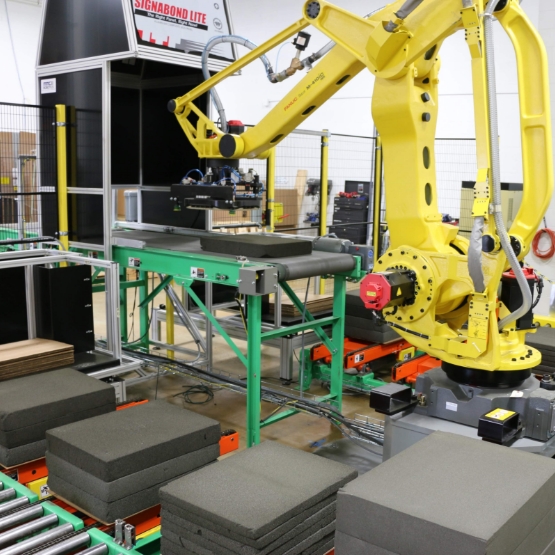
3. End of Arm Tooling
From vacuum cups and clamps to an endless variety of grippers, the design and configuration of your end-of-arm-tooling can have a profound effect on the cost. Basic EOAT that simply grabs a case or bag and places it on the pallet tends to be relatively inexpensive, but we often design custom EOAT that performs multiple tasks or handles uniquely shaped or fragile items.
Vision Guided System
See how we integrated custom end-of-arm-tooling and vision systems to solve a complex issue for Pittsburgh Corning.
4. Pallet & Slip Sheet Dispensing
Since every palletizing system requires a constant flow of pallets and many require slip sheets, the process for dispensing these items should be considered in its cost estimate. The most common approach is to outfit the cell with automated dispensers, but for operations with slow line speeds, the robotic arm can often be programmed to do the dispensing. This eliminates the cost of the dispenser(s), but requires more programming and custom EOAT.
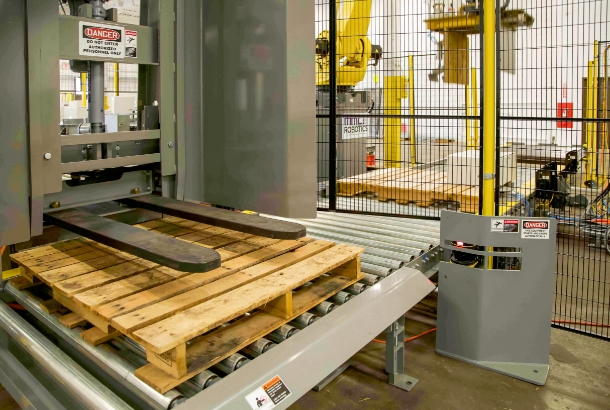
Automatic Dispensers
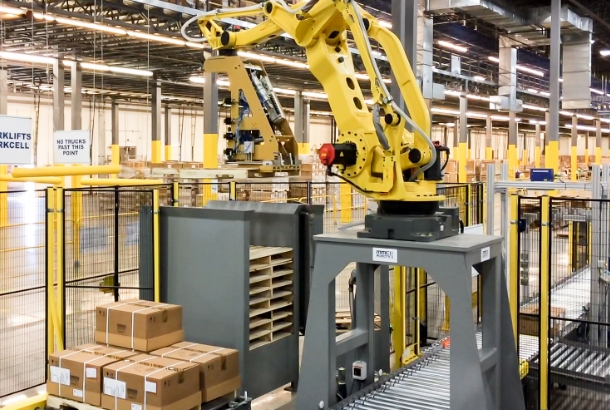
Robotic Dispensers
5. Upstream Equipment Integration
While upstream systems may not directly impact the cost of a robotic palletizer, they will affect one's ability to integrate them. Many robotic palletizers feature 1-in/1-out or 2-in/2-out systems for which standard, proven designs can be used to keep costs to a minimum. For others, however, upstreams systems are designed and integrated can have a profound effect on the cost of the palletizer.
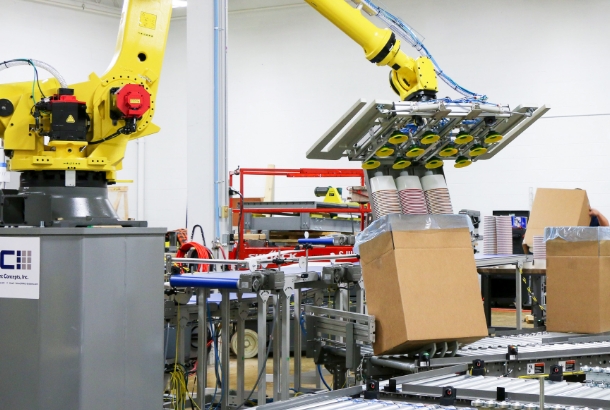
Complete System Automation
See how we automated an entire picking, packing and palletizing process with one robot and a variety of other automation systems and equipment.
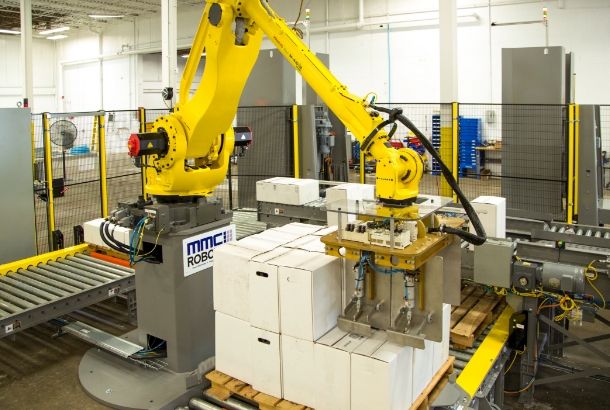
Upstream Innovation
See how we out-engineered our competition by automating the upstream process. Where they proposed two robotic palletizers, we solved the problem with one at a fraction of the cost!
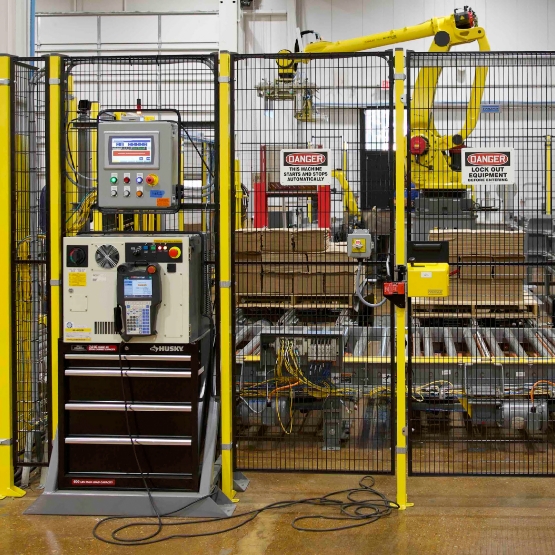
6. Safety
Incorporating the right safety technology into your robotic palletizing system — including scanners, sensors, safety switches and gates — can be a costly but necessary expense.
Achieving Maximum Safety
Cost-Effectively
At MMCI Robotics, we achieve many cost efficiencies by designing our cells to be inherently safe - giving operators easy-to-use controls located outside the cell where functions can be monitored and managed.
7. Controls
In many cases, the costs associated with designing the palletizing system, integrating it with upstream and downstream equipment and developing the controls are the largest factor in the overall cost of the system. MMCI works to keep this cost to a minimum by conducting all work in-house and by utilizing standard and pre-engineered solutions where applicable.
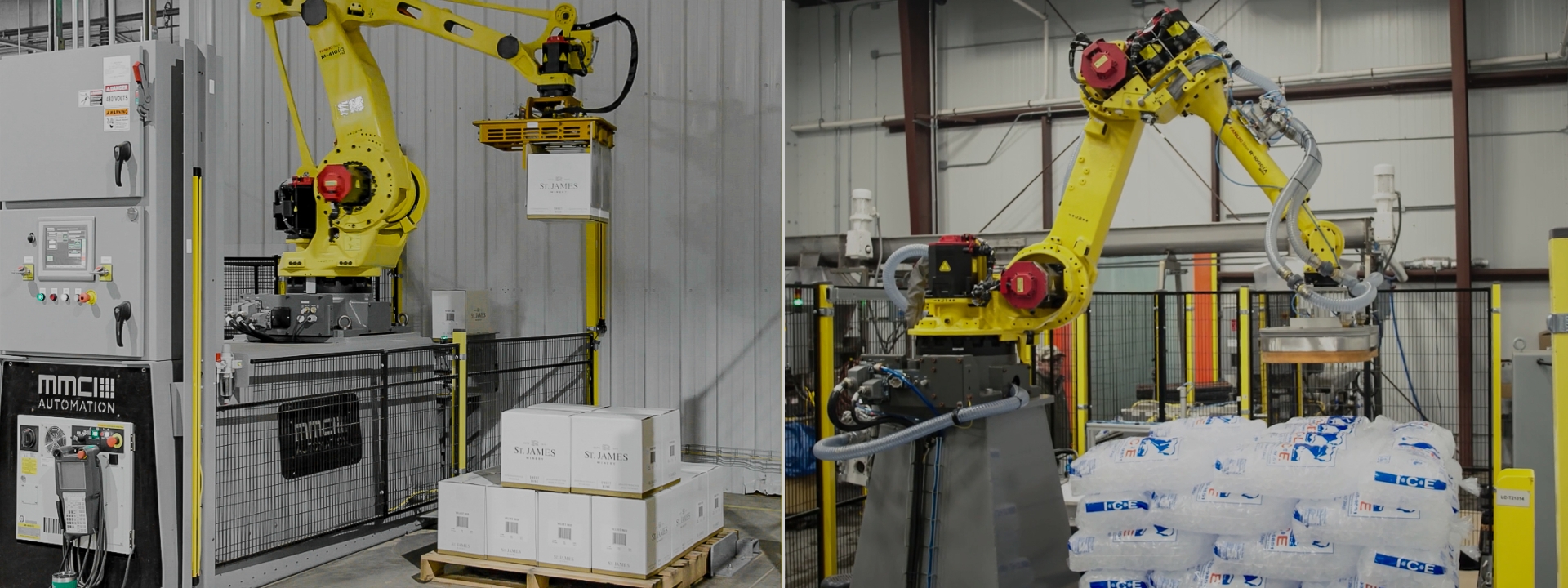
SmartLeaseCapital & Operational Leases
MMCI is pleased to provide the flexibility of both capital and operational lease options to help reduce your off-season expense. Contact Us or click on the link below to learn more.


